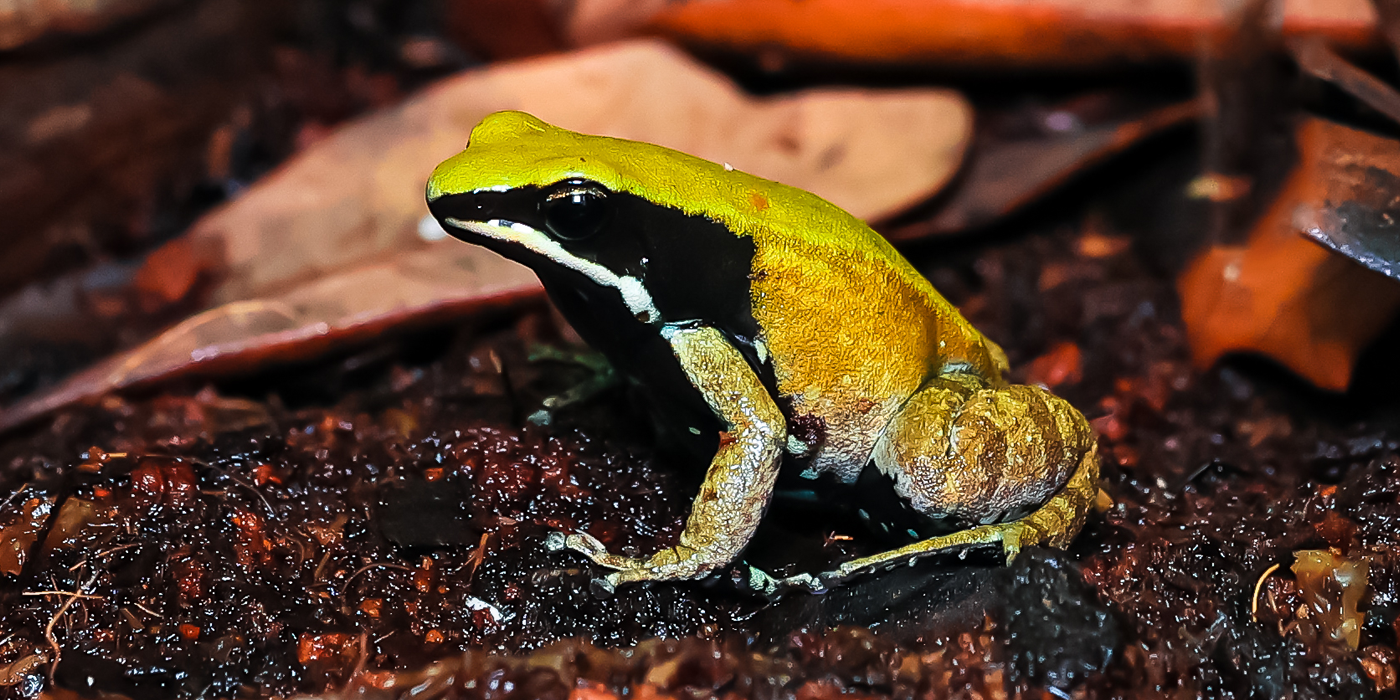Physical Description
Size
Native Habitat
Lifespan
Communication
Food/Eating Habits
Sleep Habits
Social Structure
Reproduction and Development
Conservation Efforts
The main threat facing mantellas is habitat loss due to fires, logging, firewood collection and livestock grazing. Habitat loss has led to their range becoming highly fragmented, meaning local populations are isolated, which limits genetic diversity and make it harder for the species to adapt and survive. Rising sea levels due to climate change have also isolated some island populations of mantellas.
Additionally, many amphibian populations are at risk from the threat of various strains of amphibian chytrid fungus. Although the effects of the fungus are still uncertain in a number of amphibian species in Madagascar, populations of green mantellas do not appear to have shown widespread decline to date.
Help this Species
Practice ecotourism by being an advocate for the environment when you’re on vacation. During your travels, support, visit or volunteer with organizations that protect wildlife. Shop smart too! Avoid buying products made from animals, which could support poaching and the illegal wildlife trade.
Choose your pets wisely, and do your research before bringing an animal home. Exotic animals don’t always make great pets. Many require special care and live for a long time. Tropical reptiles and small mammals are often traded internationally and may be victims of the illegal pet trade. Never release animals that have been kept as pets into the wild.
Organize or attend a stream, river, lake or other waterway cleanup in your area to preserve aquatic habitats for local species.
Support organizations like the Smithsonian’s National Zoo and Conservation Biology Institute that research better ways to protect and care for this animal and other endangered species. Consider donating your time, money or goods.
Avoid single-use plastics, such as plastic bottles, bags and utensils. Choosing reusable options instead can help reduce plastic pollution.
Conservation starts with you! Join a citizen science project where you can help collect valuable data for scientists. Encourage your friends and family to get involved too.
Protect local waterways by using fewer pesticides when caring for your garden or lawn. Using fertilizers sparingly, keeping storm drains free of litter and picking up after your pet can also improve watershed health.
Growing, transporting and preparing food uses a lot of resources, so choose local, seasonal produce when possible. A significant amount of food waste also ends up in landfills, so only buy what you can eat.
Smithsonian's National Zoo and Conservation Biology Institute. (n.d.). Green mantella. Retrieved October 22, 2025, from https://nationalzoo.si.edu/animals/green-mantella
Animal News

7 Spooktacular Animal Facts for Halloween ›

Meet the Orangutans Living at the Smithsonian’s National Zoo ›

